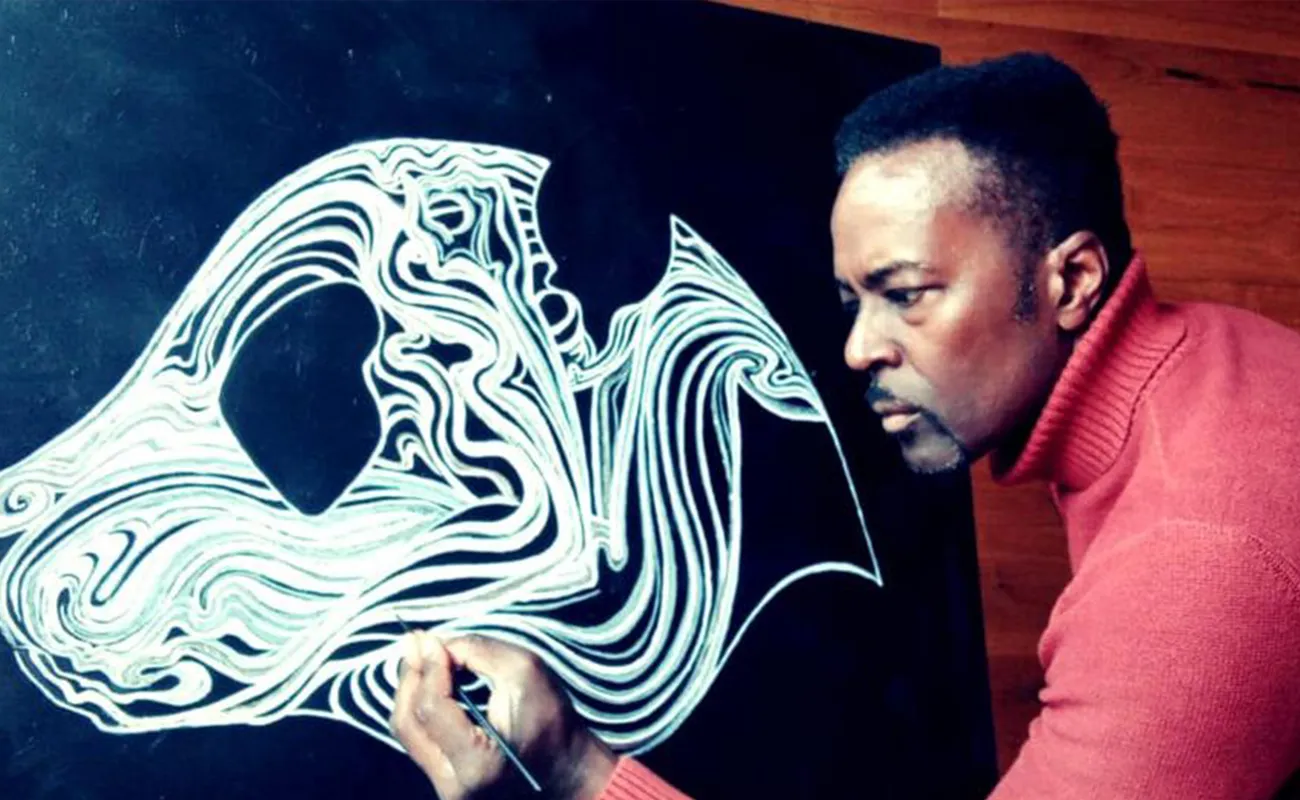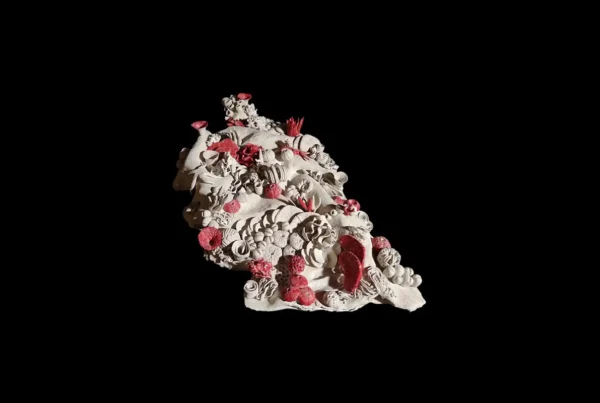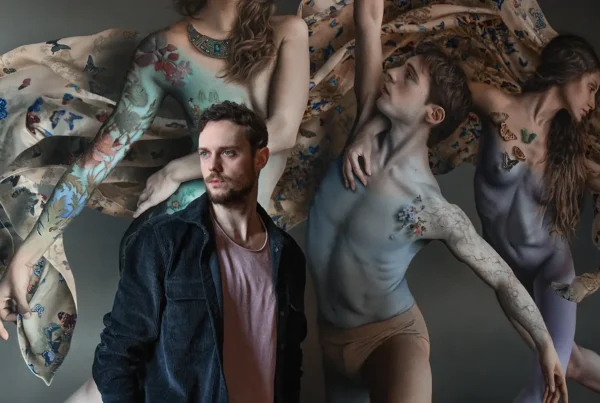“I want to demonstrate through my paintings that lines can ‘liberate’ rather than ‘limit’ us.”
From Veterinary Aspirations to Artistic Revelations
Frederick Haddox’s journey from aspiring wildlife veterinarian to acclaimed painter is a tale of transformative evolution. Born in Memphis, Tennessee, and raised in the Midwest, Haddox’s academic pursuits led him to Washington D.C., where his career took an unexpected turn. Initially committed to a future in veterinary science, working as a veterinary assistant and technician, he found his true calling in the arts during his university years. This pivotal shift in focus allowed Haddox to merge his passion for animals with his burgeoning love for painting, creating a unique artistic voice that harmonizes the energies of both human and animal subjects.
The influences of Haddox’s early interests are palpable in his artwork. His experiences in veterinary science imbued him with a deep understanding of animal forms and behaviors, which he later translated into his paintings. This foundational knowledge enables him to capture the essence of his subjects with a sensitivity that resonates through his expressive use of color, form, and line. Haddox’s ability to convey the harmonious energy between humans and animals is a testament to his diverse background and evolving perspective.
Haddox’s artistic transformation was catalyzed by his enrollment in a German Expressionism course. Here, he encountered the works of Franz Marc and Wassily Kandinsky, which deeply influenced his creative direction. The expressive qualities and emotional depth of German Expressionism inspired Haddox to explore his own life and emotions through his art. This newfound direction became a defining characteristic of his work, as he sought to not only depict life but also to express his emotional connection to it.
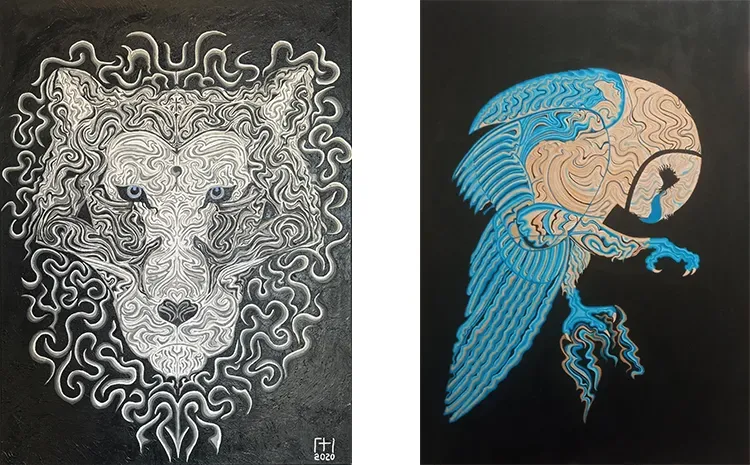
Frederick Haddox: The Emotional Spectrum of Expressionism
Haddox’s artistic style is rooted in Expressionism, a movement that prioritizes emotional impact over realistic representation. His works are distinguished by their abstract and figurative qualities, where color, form, and line take precedence over traditional composition. By employing bold lines and vibrant colors, Haddox creates a dynamic interplay of emotions, capturing the energetic movement within and around his subjects. His paintings embody a sense of fluidity and freedom, challenging conventional boundaries and inviting viewers to experience the interconnectedness of all things.
As a Black American artist who has lived, studied, and worked in various cultural contexts, Haddox’s art is infused with a rich multicultural dimension. His work juxtaposes the purity of animals with the complexity of human intimacy, exploring a wide range of emotions. This juxtaposition serves to connect the viewer to the artist’s personal experiences and broader societal themes. Haddox’s use of lines as a metaphor for life’s paths and boundaries is particularly poignant. He envisions lines not as restrictive barriers but as liberating forces that can bring people together and enhance their collective strength.
Haddox’s philosophy is vividly illustrated in his exploration of “aligned” needs for love, life, and happiness. His paintings aim to demonstrate that lines, when viewed as connectors rather than dividers, have the power to liberate. This perspective challenges traditional notions of structure and order, advocating for a more harmonious and inclusive view of human relationships and societal constructs. Through his art, Haddox invites viewers to reconsider their own perceptions and embrace the transformative potential of unity and connection.

Creating in the Midst of Public Spaces
Frederick Haddox’s choice of workspace is as unconventional as his artistic approach. Eschewing the traditional artist’s studio, Haddox prefers to paint in public spaces such as cafes. This unique setting provides him with direct interaction with the public, allowing his creative process to be influenced by the energy and feedback of those around him. The café patrons become an integral part of his work, their presence and reactions contributing to the evolving dialogue between artist and observer. This shared experience enhances the emotional depth of his paintings, making each piece a reflection of communal interaction.
The public nature of Haddox’s workspace also serves as a live advertisement for his art. Passersby are often drawn to his work in progress, sparking conversations and connections that enrich his creative process. Wearing headphones to buffer the external noise, Haddox immerses himself in the music that fuels his artistic expression. This method allows him to maintain focus while remaining open to the spontaneous interactions that occur in public spaces. The energy exchanged in these encounters is channeled back into his paintings, creating a cyclical flow of inspiration and creativity.
Haddox’s approach to handling distractions reflects his belief in the interconnectedness of all experiences. Rather than viewing interruptions as obstacles, he sees them as opportunities for new insights and inspirations. This openness to the unexpected infuses his work with a sense of spontaneity and vibrancy, capturing the essence of life’s ever-changing dynamics. By painting in public, Haddox not only creates art but also fosters a sense of community and shared experience, reinforcing the central themes of connection and harmony in his work.
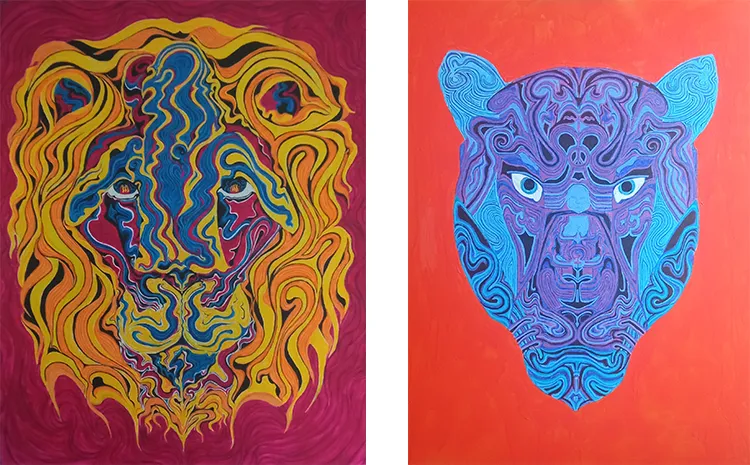
Frederick Haddox: The Influences and Symbolism in His Art
The artistic influences of Frederick Haddox are as diverse as his experiences. He draws inspiration from a range of artists who have left an indelible mark on his creative vision. Franz Marc’s portrayal of animals as metaphors for human emotions resonates deeply with Haddox, reflecting his own use of animal imagery to explore human intimacy and connection. Vincent van Gogh’s energetic brushstrokes and dynamic compositions have also influenced Haddox’s approach to capturing movement and emotion on canvas. The intricate ornamentation and expressive nature of Gustav Klimt’s works, along with Keith Haring’s iconic use of implied lines, have further shaped Haddox’s distinctive style.
One of Haddox’s most significant works is “Moonbeam,” a painting that encapsulates his artistic philosophy and emotional depth. The piece features a white horse with an embracing couple forming its face, surrounded by the vibrant colors of early evening. This composition symbolizes the convergence and divergence of energy within and outside the subject, illustrating Haddox’s belief in the transformative power of interaction. The painting’s dynamic lines and colors convey a sense of movement and connection, embodying the harmonious interplay of diverse elements that characterizes Haddox’s work.
Haddox’s preferred medium has evolved over time, reflecting his need for versatility and immediacy. Starting with pencils and watercolors, he experimented with pastels before settling on acrylics for their quick-drying properties and portability. This choice allows him to create art in various public settings, making the world his studio. Haddox’s commitment to accessibility and engagement with his audience is evident in his medium selection, further reinforcing the inclusive and interactive nature of his art.
In the future, Haddox dreams of painting a mural that vibrates with the energy of various animal and plant life. This ambitious project would embody his vision of interconnectedness and harmony on a grand scale, bringing his dynamic line work and vibrant colors to a larger audience. Through his art, Frederick Haddox continues to explore and celebrate the intricate dance of energies that define our world, inviting viewers to share in his journey of emotional and artistic discovery.



